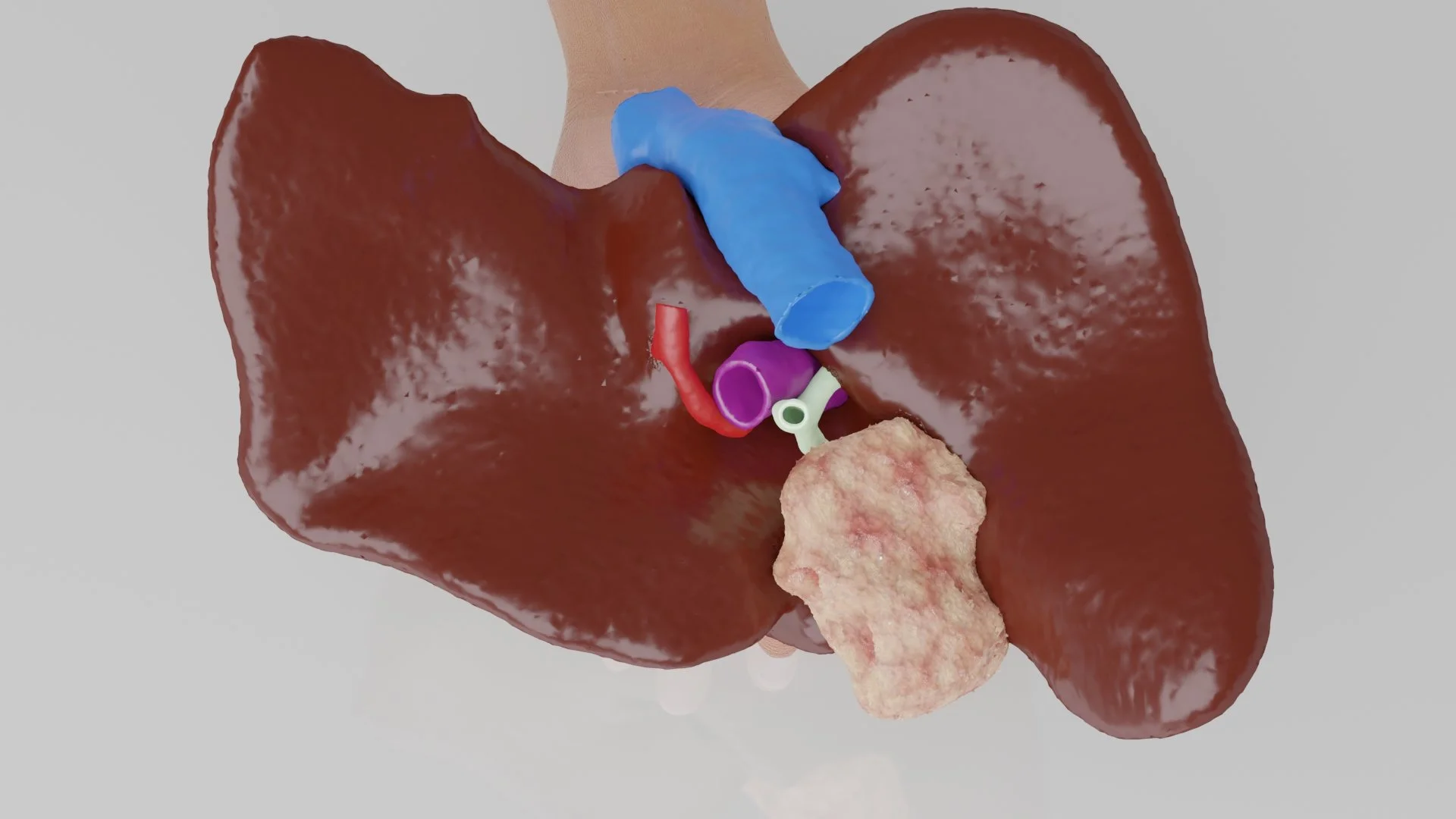
Using the latest technology to fight cancer

Integrating augmented reality and 3D printing into liver surgery
The liver is the central metabolic organ of the human body. A functional failure of this organ is life-threatening. Since carcinomas of the liver and surrounding tissue are often only detected at an advanced stage of disease, the prognosis for the affected patient is poor. The 5-year survival rates are around 20%.
During the surgical treatment of the patient, the affected liver structures will be removed. The so-called partial liver resection must be very exactly pre-planned by the surgeons, so that the blood supply of the remaining liver tissue is still ensured. In collaboration with Charité Universitätsmedizin Berlin, HumanX therefore worked on improving preoperative planning and intraoperative support for surgeons.
Gallbladder carcinoma in training model
The team led by Professor Igor Sauer, Head of Experimental Surgery at Charité, has come a great deal closer to the goal of integrating augmented reality and 3D printing into treatment. Together, we developed a practical solution for liver surgery. The results are impressive, as they now allow the operating surgeon an intraoperative 3D representation of the important vascular structures of the liver as well as the included tumor structure.
Adaptive Anatomy Source:https://vimeo.com/309471836
For HumanX, the collaboration with the Charité represents a step into the reconstruction of complex tumor pathologies. Today, the creation of patient-specific training models with highlighted tumor is part of our basic portfolio.
You can support us
You are convinced of our work and would like to support us? Then become a HumanX Patron and benefit from news and insights from our network.
More case reports:
3D reconstruction of a cranial fracture
An upcoming operation is not necessarily the only reason for creating a 3D medical model. For the collaboration with city of Halle's medical examiner's office, the reason was the investigation of a murder case.
Correction of a spinal curvature caused by scoliosis
Scoliosis is usually a C- or S-shaped bend in the spine. There are several treatment options. In severe cases, a surgical intervention is often required. One of the patients we supported with a model is Amy. Read her story here.






